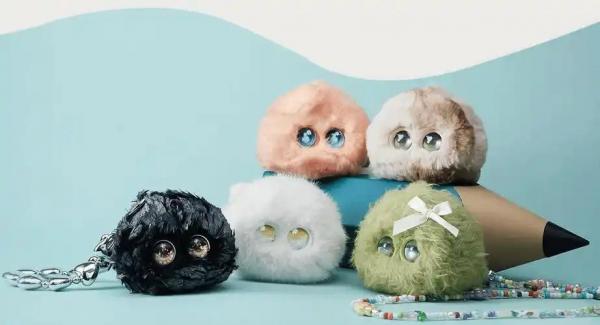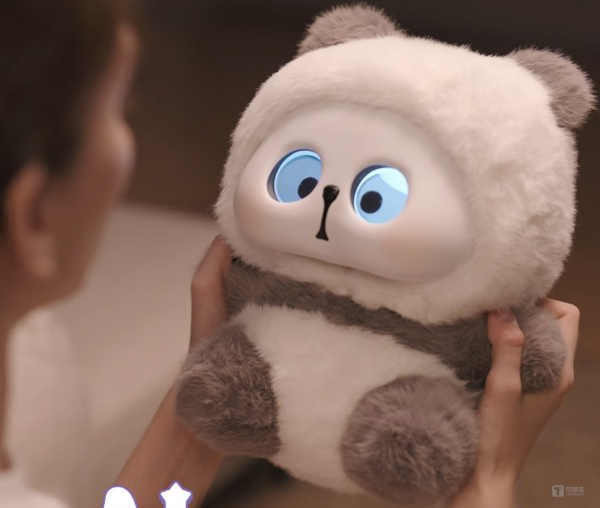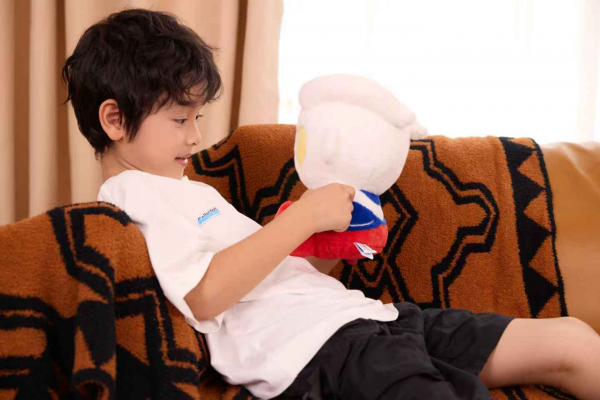Billions in Funding, a Hundred-Billion-Yuan Market Track, and a 35% Return Rate: The Boom and Hidden Pitfalls of AI Toys
![]() 10/13 2025
10/13 2025
![]() 573
573
In late September, Luobo Intelligence announced the completion of its Angel+ funding round, securing tens of millions of yuan. Sequoia Capital China led this round exclusively, with existing investors GSR Ventures and 01VC continuing to increase their stakes. Completing two funding rounds—Angel and Angel+—within six months, backed by such a high-profile investor lineup, has once again drawn widespread market attention to Luobo Intelligence and its position in the AI toy market.
Regarding GSR Ventures, which doubled down on its investment, there's a widely circulated anecdote: Four months ago, Sun Zhaozhi, the founder of Luobo Intelligence, brought an AI plush toy named 'Fu Zai' to a meeting with Jonah Zhu of GSR Ventures. In just ten minutes, Zhu, who had previously expressed skepticism about the robotics market, decided on the spot to co-lead the investment.
Today, 'Fu Zai' sells over 20,000 units per month, with channel pre-orders exceeding 100,000 units, making it a blockbuster hit in what investors consider the 'first year of AI toys.'
Capital Boom: The AI Craze Meets Emotional Consumption
In fact, Luobo Intelligence's funding is not an isolated case. From January to August 2025, China's AI toy sector saw 17 investment and funding events, with amounts exceeding 20 billion yuan, showing exponential growth compared to the 249 million yuan for the entire year of 2024. Ninety-six investment institutions have made intensive layouts, with VC giants like Sequoia, Shunwei, and 5Y Capital making an average of 2.3 investments each. Tech giants like ByteDance, JD.com, and Baidu have also entered the market, with even Tesla launching a $40 Tesla Bot toy that sold out within 24 hours of its release, with resale prices soaring to thousands of dollars.

| An AI toy developed by Luobo Intelligence: Fu Zai
The underlying logic of this capital boom is a bet on the commercialization of 'emotional value.' Traditional toy industry gross margins hover around 20%-30%, while AI toys achieve value upgrades through technological empowerment: basic models have gross margins of 50%-65%, mid-to-high-end products reach 70%-85%, and high-end products like Japan's LOVOT robot exceed 90%, far surpassing Pop Mart's 70.3%. Li Yong, founder of Yueran Innovation, has publicly stated that they are not selling hardware but emotional sustenance. Their AI pendant, BubblePal, sold 250,000 units in a year, generating nearly 100 million yuan in sales at a unit price of 389 yuan.
Technological cost reductions have fueled this boom. Five years ago, an emotional recognition system cost over $200, but lightweight models have now compressed this to 50 yuan, enabling AI toys priced at 300 yuan to achieve multi-round conversations. Cost-effective solutions from domestic chip manufacturers, combined with edge computing optimizations for real-time interaction experiences, have transformed AI toys from high-end experimental products into mass-market consumer goods. In factories in Shenzhen's Huaqiangbei district, traditional plush toys embedded with AI modules have seen their prices jump from 99 yuan to 399 yuan, with gross margins instantly tripling.
The Hype Behind the Heat: Why Are Return Rates So High?
The market's enthusiasm is undeniable. E-commerce platform data shows a 600% month-on-month surge in AI toy sales in the first half of 2025. iResearch predicts that China's AI toy market size will reach 29 billion yuan in 2025 and exceed 85 billion yuan by 2030. Once considered a 'pseudo-demand,' AI toys have now entered the mainstream market, initiating a 'full-age revolution' in emotional companionship and sparking an industrial transformation centered on technological breakthroughs, emotional consumption, and market boundary reshaping.

In the children's market, post-80s and post-90s parents view AI toys as 'screen-free educational tools.' Data shows an 87% acceptance rate of AI toys among children in the Asia-Pacific region, driven by parents' pursuit of dual 'education + entertainment' attributes. For example, iFLYTEK's Alpha Egg S1 teaches children English through AI voice interaction, while Haijiaoquan's 'Mechanical Expert' building blocks have been included in some schools' procurement lists. However, genuine user feedback reveals another side to the hype: e-commerce platform data shows that over 40% of comments on a popular AI storyteller complain about 'stuttering dialogue' and 'irrelevant answers,' with some parents complaining that 'their kids got bored after three days.'
More disruptive is the rise of the adult market. Generation Z views AI toys as 'digital pets,' with solo young adults using AI pet robots like 'Ropet' to alleviate loneliness through tactile feedback. The product raised 27 million yen in just one hour on a Japanese crowdfunding platform, showcasing its market demand and appeal. The silver-haired demographic is driving growth in age-appropriate AI toys, with the penetration rate of companion robots featuring fall detection and heart rate monitoring among solo elderly individuals expected to rise from 5% in 2025 to 20% in 2030. However, this 'emotional substitution' is also sparking ethical controversies: researchers at the University of Tokyo warn that elderly individuals who rely heavily on AI companionship experience faster deterioration in real-world social skills compared to others.
More telling are the return data. E-commerce platform data shows that while AI toy sales soared in 2024, the average return rate reached 35%, far exceeding the 15% for traditional toys. Even the blockbuster 'Fu Zai' has a mere 75% approval rating.
The crack behind the hype essentially stems from the vast gap between technological ideals and real-world experiences. The 'last-mile' dilemma in interactive experiences is the most fatal. While most AI toys claim voice recognition accuracy rates exceeding 95%, the complexity of 'accuracy' in real-world scenarios far surpasses computational definitions, exposing significant limitations. Most products only recognize emotions through tone and fail to understand context. For instance, when a child says, 'I hate you,' the AI mechanically responds, 'Don't be angry,' without detecting the child's frustration over the toy's inability to solve a math problem. Data from a leading brand shows that the 30-day active rate for AI toys is less than 8%, far below the 25% for smart speakers.
The 'Sword of Damocles' of privacy and security hangs overhead. In 2025, 23% of global AI toy data breach incidents involved the misuse of children's voice and behavioral data. The EU's AI Act requires toy companies to obtain 'privacy-by-design' certification, but compliance costs are prohibitively high for small and medium-sized manufacturers, with some admitting, 'To cut costs, we skipped the data encryption module entirely.'
Homogenized competition is also stifling innovation among small and medium-sized manufacturers. Huaqiangbei solution providers have driven AI module prices down to 100 yuan, flooding the market with 'rebranded but identical core' products. From the 399-yuan 'Little Bear Lele' to the 499-yuan 'BubblePal,' all feature core functions like storytelling and reciting Tang poetry. An industry insider revealed that their AI toy's initial price dropped from 199 yuan to 19.9 yuan, yet they still have 100,000 units in inventory. 'We need to launch new products every three months. Where's the time to refine the experience?'
Genuine Demand or New Bubble: Technological Revolution and Market Test
Is AI toys a consumption revolution driven by technology or a new bubble inflated by capital? The answer may lie at the intersection of genuine demand and technological evolution.
The authenticity of demand is undeniable. From the 'screen-free' educational needs of children to Generation Z's 'emotional substitution' and the silver-haired demographic's 'companionship needs,' AI toys address deep-seated pain points arising from societal structural changes. With 320 million people aged 60 and above and 280 million children aged 0-14 in China, the market foundations of the loneliness economy and educational anxiety are real. Japan's LOVOT robot, priced at 30,000 yuan, remains in high demand, demonstrating that users are willing to pay a premium for emotional value if the experience meets expectations.

| Another leading AI toy company—Yueran Innovation, aims to become the Pop Mart of the AI era
However, the risk of a bubble cannot be ignored. Currently, the industry's valuation logic is built on the imagination of 'hardware + subscription services,' yet in reality, user willingness to pay for content and overall payment rates remain extremely low. More dangerously, capital's 'hasty cultivation' is at play. Since 2025, funding in the AI toy sector has surged year-on-year, but technological breakthroughs are far from keeping pace with capital expectations. This vicious cycle of 'valuation bubbles - rough products - high return rates - funding difficulties' is replicating the script of the smart hardware bubble a decade ago.
Around 2014, smart wristbands experienced similar hysteria, with manufacturers claiming to 'revolutionize health management.' However, due to limited functionality and inaccurate data, over 90% of brands eventually disappeared. The lessons from history are clear: if AI toys fail to bridge the 'experience gap,' they will meet the same fate.
Consumers are not just returning products but also expressing disappointment with 'pseudo-intelligence.' Only when AI toys deeply invest in technology, target specific scenarios, and build ecosystems—evolving from 'talking machines' to 'empathetic companions' and from 'feature lists' to 'solutions'—can this AI leap in emotional consumption truly be completed.
Conclusion
From the Teddy bear that debuted in 1902 to the AI toys that exploded in popularity in 2025, the evolution of toys is essentially humanity's eternal quest for 'companionship.' The ultimate test for AI toys lies not in how advanced their technology is but in whether we are prepared to establish emotional connections with 'thinking objects' and where the boundaries of emotional projection lie.
The capital feast will eventually end, and the technological hype will subside, but human needs are eternal. If AI toys indulge in capital games while neglecting technological ethics and user experience, they will become just another bubble waiting to burst. However, if they stay true to their original intention of 'serving humanity' and bridge the experience gap, they will ultimately become drivers of a consumption revolution. The arrival of this day requires not momentary hype but a reverence for technology and insight into humanity.








